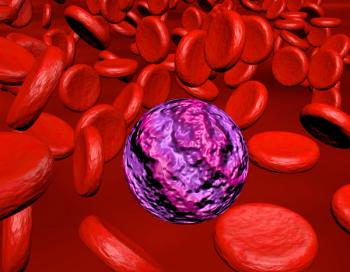
- Oncology Vol 29 No 4_Suppl_1
- Volume 29
- Issue 4_Suppl_1
(P127) Stereotactic Accelerated Partial Breast Irradiation (SAPBI) for Early-Stage Breast Cancer: Rationale, Feasibility, and Early Experience Using the CyberKnife Radiosurgery Delivery Platform
SAPBI via CyberKnife is a suitable platform for partial breast irradiation, offering improvements over existing APBI techniques, with excellent normal tissue-sparing. Our early findings indicate that CyberKnife SAPBI delivered in five fractions is a feasible, well-tolerated, and reliable platform for delivering PBI.
Olusola Obayomi-Davies, MD, Bridget Oppong, MD, Sonali Rudra, MD, Erini Makariou, MD, Lloyd D. Campbell, CMD, Kaiguo Yan, PhD, Leonard Chen, MD, PhD, Simeng Suy, PhD, Sean P. Collins, MD, PhD, Keith Unger, MD, Eleni Tousimis, MD, Brian T. Collins, MD; Georgetown University Hospital
BACKGROUND: The efficacy of accelerated partial breast irradiation (PBI) utilizing brachytherapy or conventional external beam radiation has been studied in early-stage breast cancer treated with breast-conserving surgery. Data regarding stereotactic treatment approaches are emerging. The CyberKnife linear accelerator enables excellent dose conformality to target structures while adjusting for target and patient motion. We report our institutional experience on the technical feasibility and rationale for stereotactic accelerated PBI (SAPBI) delivery using the CyberKnife radiosurgery system.
METHODS: From February 2013 to December 2013, a total of 10 patients received CyberKnife SAPBI. Four gold fiducials were implanted around the lumpectomy cavity prior to treatment under ultrasound guidance. Fiducials were tracked in real time using the Synchrony tracking system. The clinical target volume (CTV) was defined on contrast-enhanced computed tomography (CT) scans using surgical clips and postoperative changes. Inverse CyberKnife plans were generated to deliver 30 Gy in five fractions to a 5-mm uniform expansion around the CTV (PTV30Gy). PTV and organs at risk (OARs) dosimetry were assessed as per the National Surgical Adjuvant Breast and Bowel Project (NSABP) B-39 study, and cosmesis was assessed using the Harvard breast cosmesis scale.
RESULTS: At least three fiducials were tracked in 100% of cases. The mean PTV30Gy was 70 cm3, and the mean prescription isodose line was 80%. A total of 100% of the PTV30Gy received the prescription dose, with a mean maximum dose of 36 Gy. The mean ipsilateral breast V30Gy and V>15Gy were 14% and 31%, respectively. The ipsilateral lung V9Gy was 3%, and the contralateral lung V1.5Gy was 8%. For left-sided breast cancers, the heart V1.5Gy was 31%, with a mean heart dose of 1 Gy. The mean contralateral breast maximum dose was 3 Gy. The maximum skin and chest wall doses were 32 Gy and 33 Gy, respectively. One patient experienced grade 1 skin induration 3 weeks after treatment, which resolved with observation. At a median follow-up of 46 weeks, all patients have experienced good/excellent cosmetic outcomes, and no significant adverse outcomes have been reported.
CONCLUSIONS: SAPBI via CyberKnife is a suitable platform for partial breast irradiation, offering improvements over existing APBI techniques, with excellent normal tissue-sparing. Our early findings indicate that CyberKnife SAPBI delivered in five fractions is a feasible, well-tolerated, and reliable platform for delivering PBI.
Proceedings of the 97th Annual Meeting of the American Radium Society -
Articles in this issue
Newsletter
Stay up to date on recent advances in the multidisciplinary approach to cancer.


















































































